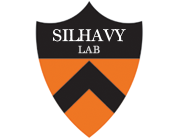Transposable lambda placMu bacteriophages for creating lacZ operon fusions and kanamycin resistance insertions in Escherichia coli
Type
We have constructed several derivatives of bacteriophage lambda that translocate by using the transposition machinery of phage Mu (lambda placMu phages). Each phage carries the c end of Mu, containing the Mu cIts62, ner (cII), and A genes, and the terminal sequences from the Mu S end (beta end). These sequences contain the Mu attachment sites, and their orientation allows the lambda genome to be inserted into other chromosomes, resulting in a lambda prophage flanked by the Mu c and S sequences. These phages provide a means to isolate cells containing fusions of the lac operon to other genes in vivo in a single step. In lambda placMu50, the lacZ and lacY genes, lacking a promoter, were located adjacent to the Mu S sequence. Insertion of lambda placMu50 into a gene in the proper orientation created an operon fusion in which lacZ and lacY were expressed from the promoter of the target gene. We also introduced a gene, kan, which confers kanamycin resistance, into lambda placMu50 and lambda placMu1, an analogous phage for constructing lacZ protein fusions (Bremer et al., J. Bacteriol. 158:1084-1093, 1984). The kan gene, located between the cIII and ssb genes of lambda, permitted cells containing insertions of these phages to be selected independently of their Lac phenotype.

